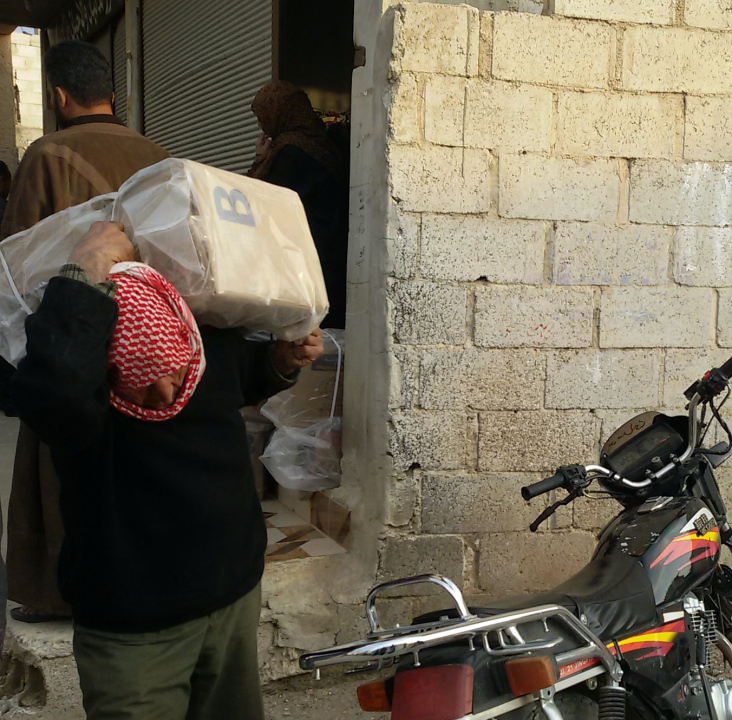Speeches Shim

November 2015—Life in southern Syria is not easy. Four years into an ongoing conflict, families struggle every day just to put food on their tables. Village stores have difficulty keeping commodities on the shelves since transportation routes are often disrupted. Even if there is food in stores, families have little money to pay for food.
Since the conflict began, agricultural production, a mainstay in southern Syria, has been dramatically reduced. And, the influx of internally displaced persons (IDPs) into new communities is putting a strain on the local leaders to provide for both their existing and new residents.
In the midst of these challenges, a USAID partner has been working since summer 2013 to reach more than 845,000 people in 90 villages in Dar’a and Quneitra Governorates with boxes full of basic food items. USAID’s partner delivers these boxes once a month, with enough food to feed a family of five.
Fayad Hazaa* is one such person. An elderly man from Dar’a Governorate, he was forced to move to a neighboring village in 2014 after continuing conflict came too close to his hometown. To make matters worse, Hazaa was recently diagnosed with intestinal cancer.
Since the outbreak of the conflict, three of Hazaa’s sons, all civilians, were killed in random attacks, two more were injured and one was arrested. The war has scarred them all. Hazaa has also assumed financial responsibility for his grandchildren and daughter-in-law, who live with him, having been displaced from their home.
Fawzia Mahmud*, another IDP from Dar’a Governorate, has taken over as head of her family in Syria while her husband is in Jordan recovering from injuries sustained in the war. Her family of 10 is one of many separated by the Syrian conflict, with women left alone to provide for their children. With no way to earn an income, Mahmud has relied on donations from her neighbors. It came as a great relief when the USAID partner began providing her family with food boxes in early 2015.
Each month she receives a box containing cooking oil, beans, bulgur, wheat, lentils, hummus, pasta, tomato paste, canned fish and rice. “We use it for lunch and dinner,” said Mahmud, while eating breakfast with her children. Although it doesn’t meet all of their food needs, it sustains them. Her son Ibrahim is particularly happy, as his favorite food—broad beans—is part of the food box.
Like Ibrahim, Hazaa was overjoyed to receive the life-saving assistance. He received his first food box in December 2014. When asked about his dreams for the future, Hazaa replied, “My biggest dream is to secure the medication and a source of income for my grandchildren.”
*Names have been changed.

Comment
Make a general inquiry or suggest an improvement.